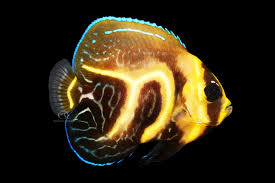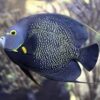Dragons in the Rituals and Ceremonies Honoring the National Heroes of China

In Chinese culture, dragons are not only powerful mythical creatures but also symbols of imperial power, strength, and auspiciousness. For millennia, they have been deeply ingrained in Chinese folklore, religious practices, and statecraft. In addition to their associations with emperors and gods, dragons have also been invoked in the rituals and ceremonies dedicated to honoring the national heroes of China. These national heroes, who have played significant roles in shaping the country’s history, culture, and identity, are often celebrated through grand festivals, memorials, and ceremonies where dragons play a central symbolic role.
This article explores the fascinating intersection between dragons and the rituals designed to honor Chinese national heroes. These heroes, ranging from legendary figures like the Yellow Emperor to modern leaders such as Mao Zedong, have been commemorated in various ways, often with elaborate rituals steeped in historical and cultural significance. In these ceremonies, dragons serve as symbols of national unity, strength, and protection, reflecting their deep-rooted role in Chinese consciousness.
The Symbolism of the Dragon in Chinese Culture
To understand the role of dragons in ceremonies dedicated to national heroes, it is essential to first examine their symbolism in Chinese culture. In traditional Chinese belief systems, dragons are revered as benevolent and powerful creatures. Unlike their fearsome counterparts in Western mythology, Chinese dragons are seen as bringers of prosperity, luck, and good fortune. They are associated with water, rain, and fertility, and are considered guardians of the natural order. Additionally, dragons represent the emperor and the imperial family, symbolizing their divine right to rule and their ability to bring harmony and balance to the empire.
The dragon’s connection to the imperial family is particularly significant, as the emperor was often referred to as the “Son of the Dragon.” This title reflected the emperor’s role as the mediator between heaven and earth, with the dragon serving as a symbol of the emperor’s divine power. In this context, dragons were integral to state rituals and ceremonies that celebrated both the emperor’s rule and the nation’s heroic past.
Dragons and the Worship of Legendary Heroes
One of the earliest and most famous national heroes in Chinese history is the Yellow Emperor, or Huangdi, considered the ancestor of the Chinese people. His legendary deeds in uniting disparate tribes, establishing the foundations of Chinese civilization, and fostering the development of Chinese medicine, culture, and governance have earned him a revered place in Chinese mythology.
In rituals and ceremonies dedicated to honoring the Yellow Emperor, dragons often play a central role. For instance, the Yellow Emperor’s Birthday is celebrated in various parts of China with ceremonies that include dragon dances, offerings to the Yellow Emperor’s spirit, and performances that re-enact his legendary deeds. These rituals not only honor Huangdi as a great hero but also invoke the protective and auspicious powers of the dragon to ensure the continued prosperity and unity of the nation.
Dragons are particularly important in these ceremonies because they represent the ideal qualities of the Yellow Emperor: strength, wisdom, and the ability to maintain harmony. In the ceremonial context, the dragon is seen as a protector of the nation and a symbol of the enduring legacy of Huangdi’s leadership.
The Role of Dragons in Honoring the Heroes of the Three Kingdoms
Another significant chapter in Chinese history is the period of the Three Kingdoms, a time of political fragmentation, warfare, and heroism. Among the most celebrated figures from this era are Liu Bei, Guan Yu, and Zhang Fei, whose loyalty, bravery, and leadership have made them icons in Chinese culture.
In the rituals honoring the heroes of the Three Kingdoms, dragons are often featured prominently as symbols of power, protection, and loyalty. For example, Guan Yu, a general known for his unwavering loyalty to Liu Bei and his martial prowess, is often depicted alongside dragons. He is frequently shown wielding a dragon-themed weapon, the Green Dragon Crescent Blade, which has become one of his most recognizable symbols. The blade itself, with its intricate dragon motifs, underscores Guan Yu’s connection to the mythical creatures that symbolize strength and valor.
In various festivals and memorials dedicated to the Three Kingdoms heroes, dragon imagery is often incorporated into processions, banners, and statues, with the dragons representing the indomitable spirit of these legendary figures. In these contexts, the dragon becomes a symbol of honor, a reminder of the heroes’ commitment to justice, and a sign of their protection over the people.
The Dragon and the Memorialization of Modern National Heroes
In addition to ancient and legendary heroes, the role of the dragon has also extended into the commemoration of modern national heroes, particularly those who played pivotal roles in the founding of the People’s Republic of China. One of the most prominent figures in modern Chinese history is Mao Zedong, the founding father of the People’s Republic of China and a symbol of revolution, national unity, and independence.
Mao Zedong’s leadership and vision in the fight against foreign imperialism and his role in uniting China under a single government have made him a subject of reverence in Chinese culture. In memorializing Mao and his contributions to the nation, dragons continue to serve as symbols of strength, power, and protection. During the National Day celebrations, which honor the founding of the People’s Republic of China, dragon dances are commonly performed in major cities, with the dragon acting as a symbol of national unity and the enduring strength of Mao’s legacy.
Dragons are also prominently featured in the rituals surrounding the Tomb-Sweeping Day (Qingming Festival), when the Chinese people pay respects to the ancestors and national heroes who have passed. During this time, offerings of food, incense, and other tributes are made, and dragon-themed decorations and dances often accompany these ceremonies, further linking the dragon to the protection and honor of the nation’s heroes.
The Dragon in Festivals Honoring National Heroes
In Chinese culture, several festivals and public celebrations are dedicated to national heroes and historical figures. These festivals not only commemorate the deeds of these figures but also serve to strengthen national identity and pride. Dragons play an essential role in these festivals, often serving as symbols of the unity and strength of the Chinese people.
One such festival is the Dragon Boat Festival, which honors the ancient poet and statesman Qu Yuan. Qu Yuan’s tragic death and his loyalty to his country have earned him a lasting place in Chinese folklore. The Dragon Boat Festival features dragon boat races, where teams compete in long, narrow boats designed to resemble dragons. This event serves as a public tribute to Qu Yuan’s sacrifice, and the dragon boats represent the national pride and resilience of the Chinese people.
The dragon’s presence in the Dragon Boat Festival symbolizes both protection and prosperity, as it is believed that the dragon’s spirit can ward off evil and bring good fortune. In addition to dragon boat races, dragon dances, dragon-shaped decorations, and offerings are commonly seen during this festival, further reinforcing the idea that the dragon is a key symbol of national heroism and unity.
Dragon Rituals and Their Role in Modern China
In contemporary China, the symbolism of the dragon in honoring national heroes has remained significant, even as the country has undergone political, cultural, and social transformations. The dragon is a central motif in the country’s national identity and continues to be used in various state functions, ceremonies, and public commemorations.
During major political events, such as the National Day parade, dragon imagery is often incorporated into the floats and displays, representing the unity, strength, and progress of the Chinese nation. The dragon continues to serve as a link between past and present, symbolizing the enduring connection between the country’s historical heroes and its modern achievements.
Conclusion: The Enduring Role of the Dragon in Honoring National Heroes
The dragon has long been an enduring symbol in Chinese culture, representing power, protection, and prosperity. Through rituals and ceremonies honoring national heroes, dragons have played a pivotal role in connecting the past with the present. From ancient heroes like the Yellow Emperor and Guan Yu to modern figures like Mao Zedong, the dragon serves as a symbol of strength, unity, and divine protection.
In festivals, memorials, and public celebrations, the dragon’s image continues to evoke the values of bravery, loyalty, and national pride. Whether through dragon boat races, dragon dances, or ceremonial rites, the dragon remains a central figure in honoring the heroes who have shaped China’s history and identity. Through these rituals, the dragon stands as a timeless protector of the nation, ensuring that the legacy of the nation’s heroes is passed down to future generations, just as it has for thousands of years.

